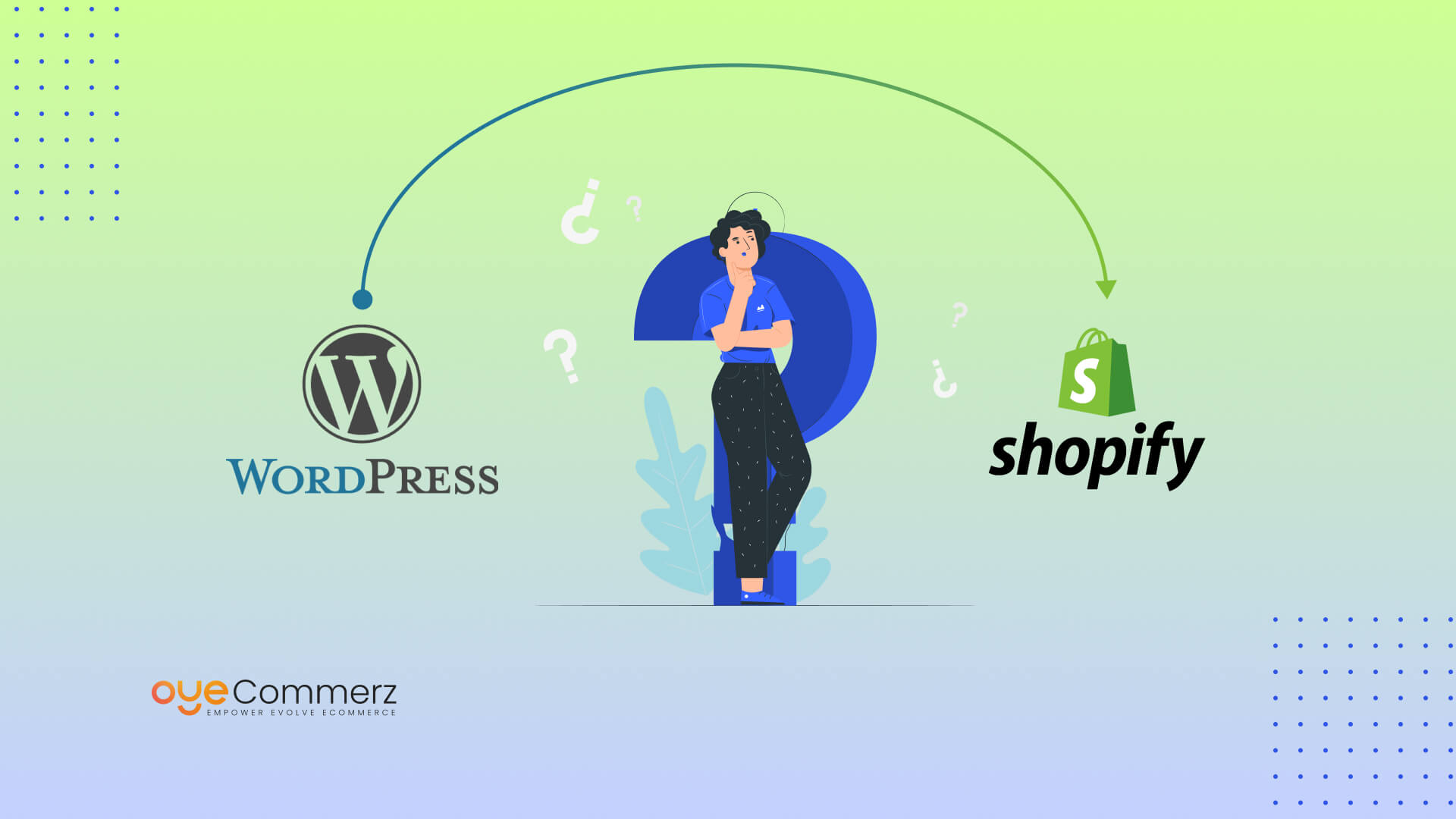Transitioning from WordPress to Shopify marks an exciting step toward streamlining your online store operations. As businesses expand, choosing a solution that aligns with growth potential, user experience, and flexibility becomes crucial. Shopify is widely recognized as a favorite for e-commerce professionals, offering unmatched adaptability, security, and user-friendliness. In this guide, we will delve into why this migration is a game-changer, highlight the benefits, and share actionable steps to facilitate a seamless move.
1. Why Migrate from WP to Shopify?
The combination of WordPress and WooCommerce, has served countless e-commerce platforms. However, as companies expand, issues like plugin dependency, security vulnerabilities, and complex setups can hinder progress. Shopify, designed explicitly for e-commerce, addresses these issues with an comprehensive, user-friendly platform. Statistics supports this transition—Shopify hosts over 4.4 million websites worldwide, with a documented 10% increase in sales performance for many businesses after migration.
2. Key Benefits of Shopify for E-commerce Success
Shopify’s robust ecosystem caters for expanding businesses. Its notable features include:
- Effortless Design Flexibility: Shopify offers over 80 professionally designed themes.
- Built-in Features: Capabilities such as Shopify Payments and built-in SEO save time and effort.
- International Expansion: Multi-currency support and localization features enable brands to expand internationally.
Additionally, Shopify delivers an availability percentage of 99.98%, ensuring your store is always operational.
3. Getting Ready for Your WordPress-to-Shopify Transition
Before migrating, evaluate your existing setup. Analyze product data, client information, and search engine rankings. Tools like Shopify’s Migration Kit or third-party solutions help ease the transition. Develop a detailed strategy, ensuring all assets—product descriptions, media files, and articles—are optimized for transfer.
4. The Product data migration Importance of Accurate Data Migration
Transferring your data forms the foundation for a successful platform switch. When migrating from WordPress to Shopify, focus on:
- Inventory Details: SKU, item summaries, and categories.
- Customer Data: Emails, order history, and preferences.
- SEO Optimization: Retain meta tags, URLs, and forwarding paths to avoid SEO losses.
Use apps like LitExtension to streamline data E-commerce re-platforming transfer while minimizing errors.
5. Customizing Your Shopify Store
Post-migration, customizing your Shopify store ensures it reflects your business identity. Take advantage of Shopify’s intuitive page builder to create layouts with ease. Shopify's templates are optimized for all devices, providing a seamless UX across platforms—a key point, since 74% of online shopping is generated by mobile visitors.
6. Maintaining SEO During Migration
SEO is vital for preserving your online presence during migration. Shopify excels in SEO with clean URL structures, built-in optimization tools, and seamless blog integration. Ensure:
- Implement 301 redirects for existing links.
- Enhance updated content with targeted phrases.
- Leverage plugins like Plug in SEO to track analytics after the switch.
7. Essential Tests After Migrating to Shopify
Once the migration is complete, conduct thorough testing.
Check: - Website speed (Shopify delivers faster speeds in contrast with WP).
- Payment integration reliability and checkout processes.
- Mobile responsiveness.
Testing guarantees your store delivers a smooth shopping experience from day one.
8. Real-Life Success Story
One such migration success story is Gymshark, a sportswear company that moved to Shopify. Post-migration, the company experienced a 60% increase in mobile sales and significantly lowered site downtime. This highlights the potential of Shopify in driving online business success.
9. Overcoming Common Migration Issues
Migration is not without obstacles, such as data integrity and reconfiguring custom functionalities. However, Shopify’s robust support and external professionals simplify the process. Partnering with experienced Shopify developers helps guarantee a smooth transition.
10. Making the Switch: The First Step Toward Success
Switching from WP to Shopify represents a forward-thinking decision to e-commerce. By addressing scalability, streamlining operations, and improving buyer satisfaction, Shopify empowers businesses to succeed in challenging industries.
Conclusion
Switching from WP to Shopify is a strategic move that can greatly enhance your online business performance. With a robust migration plan, the appropriate resources, and professional guidance, you can unlock new success milestones.
Ready to make the leap? Let’s discuss how our Shopify migration services can revolutionize your online store. Get in touch today, or consider: Is it time to seize Shopify’s advantages for your store?
